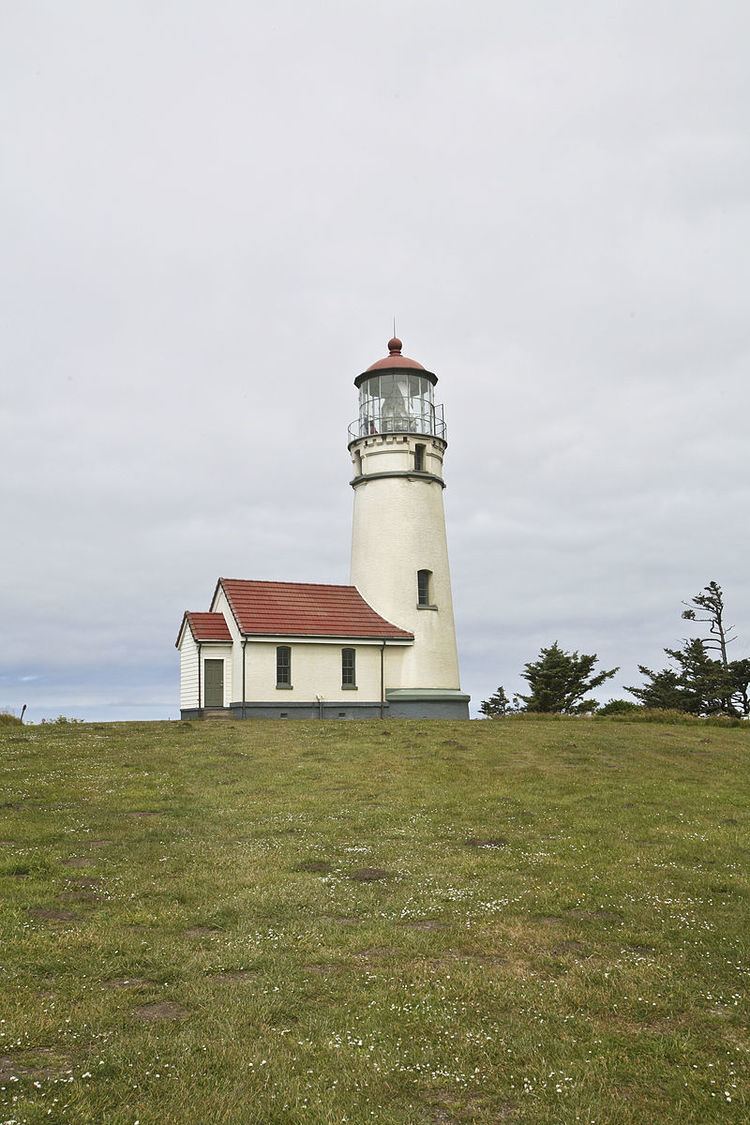Year first lit December 20, 1870 Foundation Brick Opened 20 December 1870 | Year first constructed 1870 Automated 1980 Height 18 m Construction Brick | |
 | ||
Tower shape Conical attached to workroom Hours Open today · 10AM–3:15PMWednesday10AM–3:15PMThursday10AM–3:15PMFriday10AM–3:15PMSaturday10AM–3:15PMSunday10AM–3:15PMMonday10AM–3:15PMTuesdayClosed Similar Cape Blanco, Coquille River Light, Patrick Hughes House, Cape Arago Light, Umpqua River Light | ||
Cape blanco lighthouse
Cape Blanco Light is a lighthouse located on Cape Blanco, Oregon, United States in Cape Blanco State Park.
Contents
- Cape blanco lighthouse
- North west cape blanco light house oregon coast travel video
- Construction of the light
- Keepers
- References
North west cape blanco light house oregon coast travel video
Construction of the light
In a deed recorded in 1867, John D. and Mary West sold the United States a 47.3-acre (19.1 ha) tract of land. The Light-House board determined that the offshore reef and islands at Cape Blanco were dangerous to maritime commerce; therefore, a lighthouse was authorized for construction.
Over the next three years, the lighthouse was constructed under the direction of Lt. Col. Robert Stockton Williamson. Supplies were ordered and shipped to the cape. Bricks were deemed cheaper if made onsite, so a brickmaker was located and a deal was struck with Rancher Patrick Hughes for access to the required materials.
Keepers
Many keepers followed Burnap, the most notable were James Langlois and James Hughes who served as keepers for 42 and 38 years respectively. James Langlois raised a large family. James Hughes, son of neighboring rancher Patrick Hughes, raised two girls.
For many years, Keeper Langlois requested additional housing for the station. With his large family, the Hughes family, and the other families that came and went, the duplex was just too crowded. His requests went unanswered until 1909 when Head Keepers' quarters were constructed.
James Hughes found his own solution before the government responded. James owned land across the Sixes River from his father and quickly constructed a home for his family, moving from the lighthouse about the same time they finished additional lighthouse quarters. James continued to work at the lighthouse, commuting to assume his duties.
Life was difficult on the cape, which experiences constant high winds during the spring and summer and severe storms in winter. The weather kept the keepers busy with continual repairs and painting. Despite the hardship, both Langlois and Hughes stayed there until retirement.
